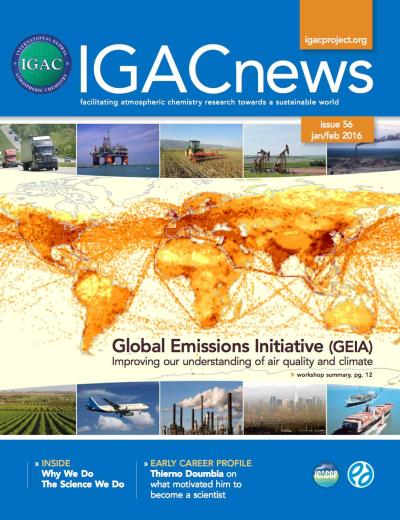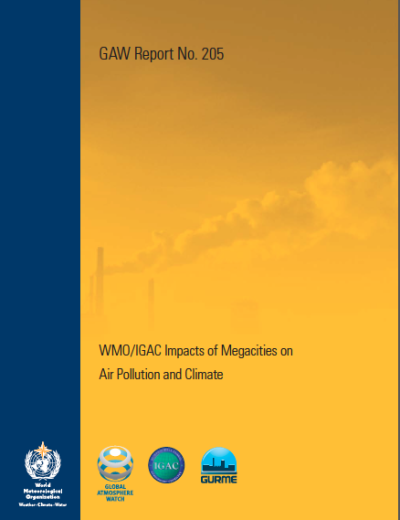


Joint North American-European Workshop on Measurement and Modeling of Methane Fluxes from Landfills
Joint North American-European Workshop on Measurement and Modeling of Methane Fluxes from Landfills Smith, KA, and J Bogner. (1997). IGAC Core Project Office, Cambridge, Mass., USA, 46 pp.
Global Measurement
Global Measurement Standardization of Methane Emissions from Irrigated Rice Cultivation Sass, RL and H-U Neue (eds.) IGAC Core Project Office, Cambridge, Mass., USA, 10 pp., 1994.

Time to Act: The Opportunity to Simultaneously Mitigate Air Pollution and Climate Change.
IGBP/IGAC (2012). Time to Act: The Opportunity to Simultaneously Mitigate Air Pollution and Climate Change. International Geosphere-Biosphere Programme (IGBP) and International Global Atmospheric Chemistry (IGAC) Project, 6pp.

WMO/IGAC Impacts of Megacities on Air Pollution and Climate
Zhu, T., Melamed, M. L., Parrish, D., Gllardo Klenner, L., Lawrence, M., Konare, A. and Liousse, C. (Eds). (2012). WMO/IGAC Impacts of Megacities on Air Pollution and Climate. World Meteorological Organization, Geneva, Switzerland. ISBN: 978-0-9882867-0-2. p 299.